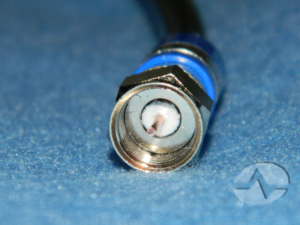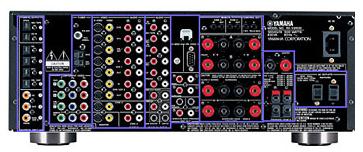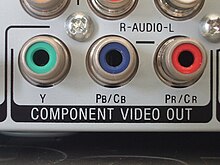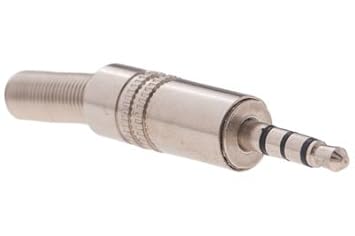The venerable RCA connector, pictured above, was a staple of video equipment for decades. It was first used by the RCA corporation as a connection between radios and amplifiers in the 1930s. Its use for video seems to have really taken off in the 1970s when it was used for VCRs. Why was it the connector of choice?
RCA connectors give a very strong connection that's also easy to remove with a pull. That makes them very versatile for home theater connections, where they are still sometimes used for audio. The connector is fairly small compared to other connectors in use in the 1950s and 1960s as well.
The center pin of an RCA connector is big, compared to the bare wire of an RG6 coaxial cable (see picture below)

That was really important in the middle part of the last century when manufacturing tolerances weren't as tight. You wanted to make sure that the center conductor was really fitting in their nice and tight. The center pin of an RCA connector is almost as big as the one on a UHF connector (pictured below)

but the RCA connector is much smaller. That makes it easier for manufacturers to make components smaller. Imagine if this audio receiver (below) used UHF connectors instead of RCA!

The real genius of the RCA connector is in its shielding. The male end of the connector provides some shielding, but the female end also provides an uninterrupted metal shield. Take a look:

This metal outer shield on the male side isn't unique for video, but take a look at a TRRS connector (a so-called "headphone plug")

The entire right side of that connector is bare metal, there is no shielding at all. This makes the connector suitable for audio, which doesn't require as much shielding, but it's no good for video. You'll sometimes see a connector like this one used to get video out of a small device, but in that case the device itself probably has a lot more shielding on the female side. Not only that, but you're probably not getting the best possible output on that small device.
Well, we do. You'll find RCA connectors on a lot of equipment still to this day. It's just not as common as it used to be. The HDMI connection is an easy and versatile way to get both video and audio from place to place. Because HDMI can actually carry Dolby Atmos sound, it can take the place of over 30 RCA connectors. Most commonly, an HDMI connector would take the place of three RCA connectors for video plus six for audio. Even so, that makes it much more convenient than the old standby RCA connector.
On the commercial end, the kind of connections that would be made by an RCA connector are more commonly made today with BNC connectors. The BNC connector can work with coaxial cable, which has very high bandwidth, and locks on so that it can't be pulled out accidentally.

Still, you have to hand it to the good old RCA connector. It's versatile, inexpensive, and a lot better than you'd think it would be for something that was designed almost 100 years ago.
You'll find everything you need at Solid Signal. We have thousands of hard to find and older cables available at the best price. The quality level is super-high, suitable for professional work. If you're not sure what you need, or you need a custom quote, call us at 888-233-7563 or fill out the form below.
The post What happened to the good old RCA connector? appeared first on The Solid Signal Blog.
Continue reading...
Easy to use
RCA connectors give a very strong connection that's also easy to remove with a pull. That makes them very versatile for home theater connections, where they are still sometimes used for audio. The connector is fairly small compared to other connectors in use in the 1950s and 1960s as well.
Big center conductor
The center pin of an RCA connector is big, compared to the bare wire of an RG6 coaxial cable (see picture below)

That was really important in the middle part of the last century when manufacturing tolerances weren't as tight. You wanted to make sure that the center conductor was really fitting in their nice and tight. The center pin of an RCA connector is almost as big as the one on a UHF connector (pictured below)

but the RCA connector is much smaller. That makes it easier for manufacturers to make components smaller. Imagine if this audio receiver (below) used UHF connectors instead of RCA!

Better shielding
The real genius of the RCA connector is in its shielding. The male end of the connector provides some shielding, but the female end also provides an uninterrupted metal shield. Take a look:

This metal outer shield on the male side isn't unique for video, but take a look at a TRRS connector (a so-called "headphone plug")

The entire right side of that connector is bare metal, there is no shielding at all. This makes the connector suitable for audio, which doesn't require as much shielding, but it's no good for video. You'll sometimes see a connector like this one used to get video out of a small device, but in that case the device itself probably has a lot more shielding on the female side. Not only that, but you're probably not getting the best possible output on that small device.
Why don't we still use RCA connectors?
Well, we do. You'll find RCA connectors on a lot of equipment still to this day. It's just not as common as it used to be. The HDMI connection is an easy and versatile way to get both video and audio from place to place. Because HDMI can actually carry Dolby Atmos sound, it can take the place of over 30 RCA connectors. Most commonly, an HDMI connector would take the place of three RCA connectors for video plus six for audio. Even so, that makes it much more convenient than the old standby RCA connector.
On the commercial end, the kind of connections that would be made by an RCA connector are more commonly made today with BNC connectors. The BNC connector can work with coaxial cable, which has very high bandwidth, and locks on so that it can't be pulled out accidentally.

Still, you have to hand it to the good old RCA connector. It's versatile, inexpensive, and a lot better than you'd think it would be for something that was designed almost 100 years ago.
Shopping for cables?
You'll find everything you need at Solid Signal. We have thousands of hard to find and older cables available at the best price. The quality level is super-high, suitable for professional work. If you're not sure what you need, or you need a custom quote, call us at 888-233-7563 or fill out the form below.
The post What happened to the good old RCA connector? appeared first on The Solid Signal Blog.
Continue reading...

